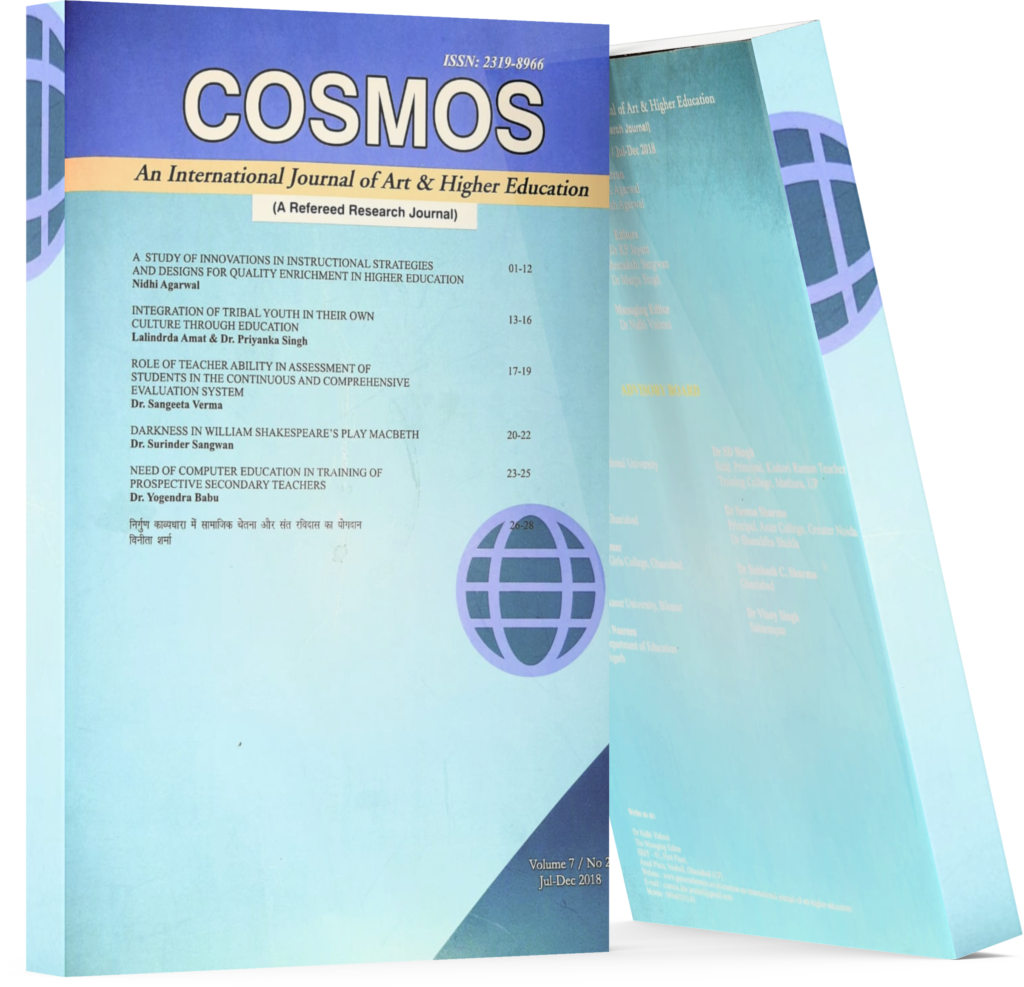The Influence Of The Students’ Scholastic Abilities On Their Performance In The Board Examination
Keywords:
Student, Scholastic Abilities, Board Examination, Academic Performance, Graduate SchoolAbstract
The major problem of this study was to determine the influence of students’ scholastic abilities on students’ performance in board examination. The study made use of the descriptive-correlational method of research in which standardized instruments were the primary data gathering tool. The respondents of the study were selected graduate school students from a private Catholic university in Malolos. The data were presented using tables and the results of the study were tabulated and processed using Statistical Packages for Social Sciences (SPPS). The study revealed the students’ academic performance in the following categories: (1) Verbal Reasoning - 8.36 (average);(2) Non-Verbal Reasoning - 14.65 (superior); (3) Reading Vocabulary - 10.80 (average); (4) Reading Comprehension-16.20 (superior); and (5) Math Application - 9.77 (average). Moreover, the results of students’ performance in board examination showed that 80% were satisfactory and 20% were very satisfactory. The findings of the study indicated that students’ scholastic abilities bore no significant effect on students’ performance in board examination when considering the joint effects of all variables on scholastic abilities.
Downloads
References
Battle, J. & Lewis, M., (2002). “The increasing significance of class: The relative effects of race and socioeconomic status on academic achievement.”
Bryant, B.R. and Bryant, D.P., (2003). “Assessing the writing abilities and instructional needs of students”. Handbook of Psychological and Educational Assessment of Children, 419-437.
Buenavista Regina C., (2001). “Factors related to private elementary and secondary school teacher’s organizational commitment”. Bulacan State University, City of Malolos, Bulacan.
Casanave, C.P. and Li, X., (2008). “Learning the literacy practices of graduate school: Insiders' reflections on academic enculturation”. Ann Arbor: University of Michigan Press.
Duhaylongsod, B., Canillas, R., Cruz, J.L.D., Fernandez, B. and Kawi, C., (2018). “The Helpfulness of Counselor Educators’ Teaching Competencies and Strategies as Experienced by Passers of Licensure Examination for Guidance Counselors”. Southeast Asian Journal of Science and Technology, 3(1).
Freund, P.A., Holling, H. and Preckel, F., (2007). “A multivariate, multilevel analysis of the relationship between cognitive abilities and scholastic achievement”. Journal of Individual Differences, 28(4), 188-197.
Hagstrom, F., Baker, K.F. and Agan, J.P., (2009). “Undergraduate research: A cognitive apprenticeship model”. Perspectives on Issues in Higher Education, 12(2), 45-52.
Huang, W.T. & Ho, H.F., (2017). “Selection Determinants in Education Major Graduates Occupations”. Contemporary Issues in Education Research, 10(2), 77-86.
Hunter, J.E. and Schmidt, F.L., (2002). “Fixed effects vs. random effects meta-analysis models: implications for cumulative research knowledge”. International Journal of Selection and Assessment, 8(4), 275-292.
Johnson, W.B. and Huwe, J.M., (2003). “Getting mentored in graduate school”. American Psychological Association.
Kaddoura, M.A., Van Dyke, O. and Yang, Q., (2017). “Correlation between Critical Thinking Skills and National Council Licensure Examination for Registered Nurses Success in Accelerated Bachelor Nursing Students”.
Teaching and Learning in Nursing, 12(1), 3-7. 12. Lamprecht, L.M. and Pitre, S., (2018). “Developing a Pre-practicum Environment for
Beginning Counselors: Growing My Counselor Educator Self”. The Journal of Counselor Preparation and Supervision, 11(2). Retrieved from
https://repository.wcsu.edu/jcps/vol11/iss2/3 13. Lansangan, M.L.G., Quiambao, D.T., Baking, E.G., Nicdao, R.C., Nuqui, A.V. and Cruz, R.C., (2015). “Correlates of Students’ academic Performance in Intermediate Level”. Management, 1(2), 1-7.
Mauch, J. & Park, N., (2003). “Guide to the successful thesis and dissertation: A handbook for students and faculty”. CRC Press.
Niemi, P.M., (2017). “Students’ experiences of social integration in schoolwide activities - An investigation in the Finnish context”. Education Inquiry, 8(1), 68-87.
Puig, A., Yoon, E., Callueng, C., An, S. and Lee, S.M., (2014). “Burnout syndrome in psychotherapists: A comparative analysis of five nations”. Psychological services, 11(1), 87.
Randolph, J.J., (2009). “A guide to writing the dissertation literature review”. Practical assessment, research & evaluation, 14(13), 1- 13.
Ray, R. and Brown, J., (2015). “Reassessing Student Potential for Medical School Success: Distance Traveled, Grit, and Hardiness”. Military Medicine, 180(4S), 138-141.
Roth, B., Becker, N., Romeyke, S., Schäfer, S., Domnick, F. and Spinath, F.M., (2015). “Intelligence and school grades: A meta analysis”. Intelligence, 53, 118-137.
Tuason, M.T.G., Galang Fernandez, K.T., Catipon, M.A.D., Trivino‐Dey, L. and Arellano‐Carandang, M.L., (2012). “Counseling in the Philippines: Past, present, and future”. Journal of Counseling & Development, 90(3), 373-377.
Tuliao, A.P., (2014). “Mental health help seeking among Filipinos: a review of the literature”. Asia Pacific Journal of Counselling and Psychotherapy, 5(2), 124-136.
Volodina, A., Nagy, G., & Köller, O., (2015). “Success in the first phase of the vocational career: The role of cognitive and scholastic abilities, personality factors, and vocational interests”. Journal of Vocational Behavior, 91, 11-22.
Wang, M.T. and Holcombe, R., (2010). “Adolescents’ perceptions of school environment, engagement, and academic achievement in middle school”. American Educational Research Journal, 47(3), 633-662.

